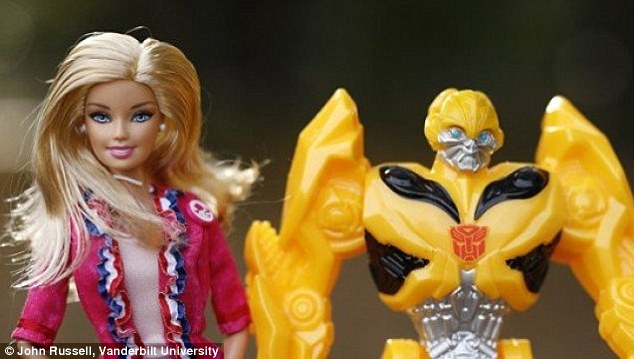Most of the time, women are better at recognising faces according to Daily mail.
That is, unless it’s a Transformers toy.
A new study has found men are better at recognising Transformers because they’ve had that memory imprinted into their brains as a child.
The results suggest that the faces we experience when we are very young may leave a trace in our adult memory.
‘This is the first category of faces where men do better than women,’ lead researcher Isabel Gauthier said.
All previous research has shown that women are better than men at facial recognition in general, or that there isn’t a difference between genders in how they recognise faces.
But researchers wanted to challenge this theory, by looking at adult reactions to children’s toys.
Dr Gauthier said: ‘One of the suggestions of this prior work is that women are inherently better than men at recognising faces.
‘But we believe that experience plays a major role in facial recognition so we tried to come up with some way to test our hypothesis regarding this gender difference.’
The researchers surveyed people and found that more men played with Transformers as children, while more women played with Barbies.
To take advantage of this difference, the team designed a study that compared men’s and women’s ability to recognise male faces, females faces, Barbie faces, Transformer faces, and as a control category, different types of car.
The study involved 295 participants – 161 men and 134 women.
Each person was given a group of six images, and then presented with a series of trials that showed them three images – one from the initial set, and two new faces – and asked them to identify the familiar face
The results showed that men did slightly better at women at recognising cars, but that both sexes performed equally well with human faces.
Dr Gauthier said: ‘We also found that women had a small but statistically significant advantage at identifying Barbie faces while men had a small but statistically significant advantage in identifying Transformer faces.
‘This is the first category of faces where men do better than women.’
The researchers considered the possibility that men recognised the Transformers as they saw them as objects rather than faces.
To address this question, they looked at individual differences.
Generally, the people who were best at recognising human faces were also the best at recognising the toy faces.
In contrast with this, there was a weaker relation between performance with toys and cars
This suggests that people were reacting to the toy faces as faces, and not objects.
Professor Gauthier’s previous studies have shown that a short experience with a new type of face, such as an alien in a sci-fi film, can change how the brain processes these faces.
The new research suggests that the experience is long lasting.
Professor Gauthier added: ‘Clearly, the faces you experience as a child leave a trace in your adult memory.
‘It is unlikely that this effect is limited to these particular toys.’
N.H.Kh

